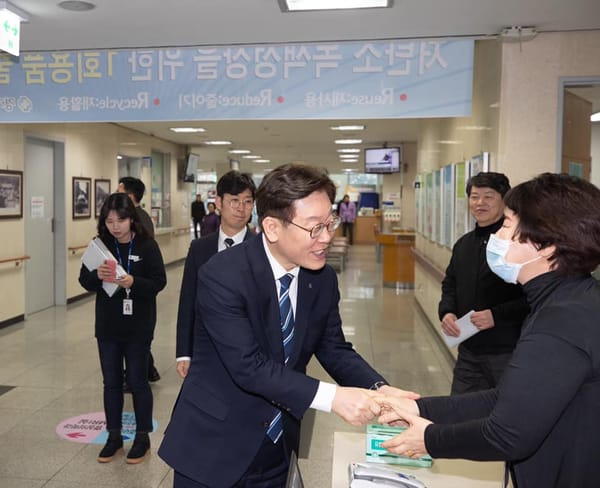Photo: Jungang-ro Station of Daegu subway after the 2003 disaster. Credit: Association of Victims' Families of the Daegu Subway Fire Disaster.
On February 18, 2003, a suicidal man named Kim Dae-han 김대한 got on the subway in Daegu 대구 with two litres of gasoline, and set fire to his car. Communications failures and a bungled response turned what could have been no more than a minor accident into a major disaster when another train pulled in and stopped next to the burning subway car. The fire spread to the second train, whose doors automatically locked, trapping its passengers inside. In the end, 192 persons perished in the world’s second largest subway disaster.
The Daegu Subway Disaster was the last in a string of public safety disasters that struck South Korea from the mid-1990s onward, including the 1994 collapse of Seongsu Bridge 성수대교 in Seoul that killed 32, the 1995 collapse of the Sampoong Department Store 삼풍백화점 in Seoul that killed 502, and the 1995 gas main explosion in Daegu that killed 101. The common thread in all these disasters was a disregard for safety protocols in favor of corporate profit or bureaucratic expedience, a deadly consequence of South Korea’s breakneck development in the 1980s.
For a time, South Koreans believed that their country had moved beyond poorly managed safety protocols and senseless deaths - which is one of the reasons why the Sewol Ferry Disaster 세월호 참사 of 2014 hit so strongly, ultimately resulting in the fall of the Park Geun-hye 박근혜 administration. With the Itaewon Disaster in October 2022, Koreans are now wondering whether the country learned anything at all from all the previous disasters. Some, in fact, appeared to have taken the most inhumane and horrifying lesson from past disasters: that it is possible to retroactively erase the disaster by attacking victims’ families.
Even 20 years later, the families of those who died in the Daegu disaster are unable to peacefully commemorate their loss. As the families gathered in Dong-gu District of Daegu 대구 동구 for the memorial, local merchants staged a protest with loud pop music in an effort to drive out the mourners who might threaten the shopping spirit. Daegu mayor Hong Jun-pyo 홍준표 declined to attend the memorial, calling it “a tool of partisanship” because families of the victims of the Sewol Ferry Disaster and the Itaewon Disaster were also in attendance.








